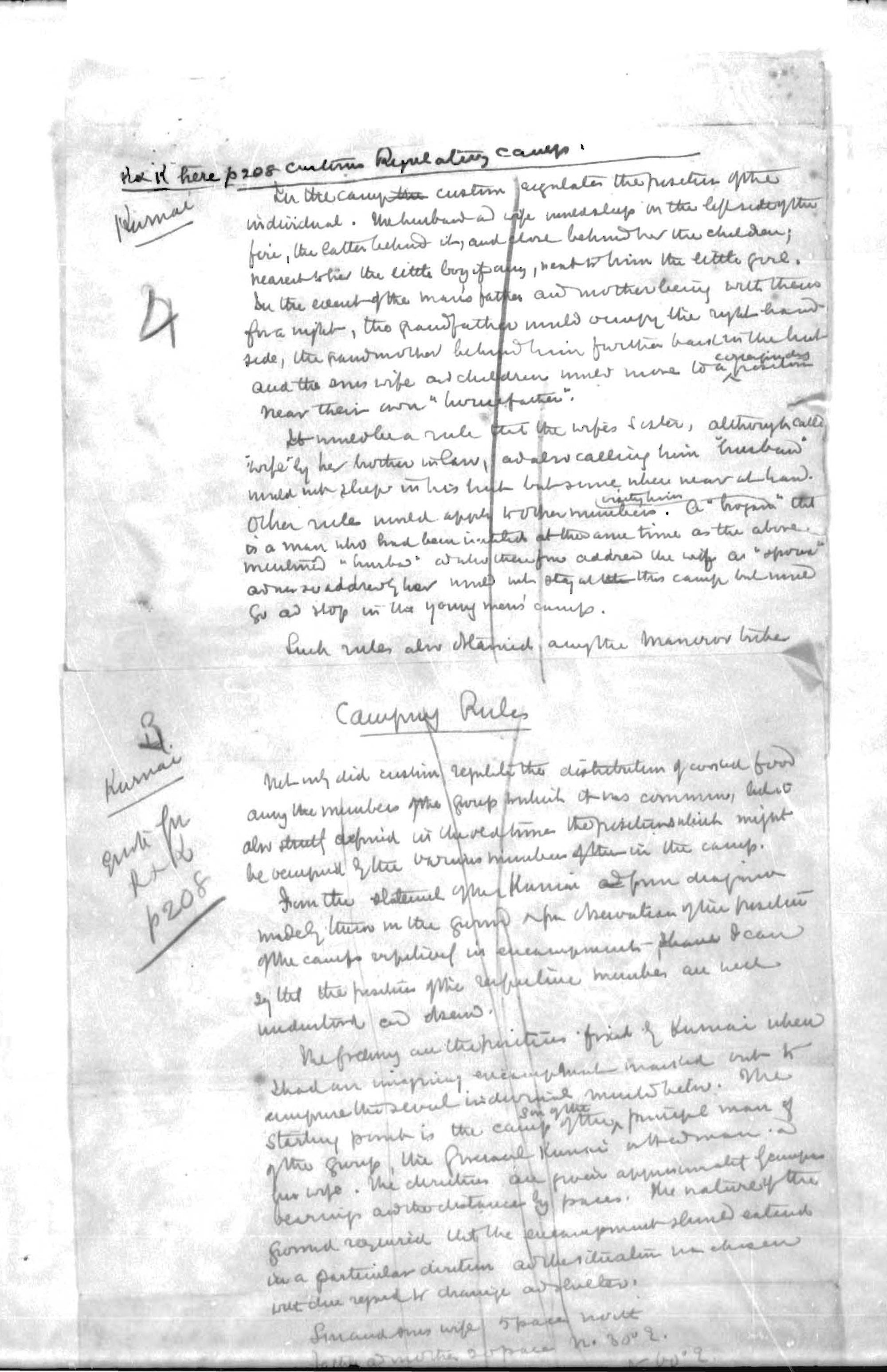Notes about Camping and Food Division

Transcription - Page 1
K + K here p 208 customs Regulating camp.
Kurnai
4
In the camp [the- crossed out] custom regulates the position of the
individual. The husband and wife would sleep on the left side of the
fire, the latter behind it, and close behind her the children;
nearest to her the little boy if any, next to him the little girl.
In the event of the man's father and mother being with them
for a night, the grandfather would occupy the right hand-
side, the grandmother behind him further back in the hut
and the son's wife and children would move to a correspondng position
near their own “house father”.
It would be a rule that the wife’s sister, although called
‘wife’ by her brother in law, and also calling him “husband”
would not sleep in his hut but somewhere near at hand.
Other rules would apply to other members. A “brogan” visiting him that
is a man who had been initiated at the same time as the above
mentioned “husband” and who therefore addressed the wife as “spouse”
and was so addressed by her would not stay at [the - crossed out] this camp but would
go and stop in the young men’s camp.
Such rules also obtained among the Maneroo tribe.
Camping Rules
3
Kurnai
quote from
K + K
p208
Not only did custom regulate the distribution of cooked food
among the members of the group to which it was common, but it
also [strictly -crossed out] defined in the old times the positions which might
be occupied by the various members [of the - crossed out] in the camp.
From the statement of the Kurnai [and - crossed out] from diagrams
made by them on the ground + from observation of the position
of the camps respectively in encapments - [I have - crossed out] I can
say that the position of the respective members are well
understood and observed.
The following are the positions fixed by Kurnai when
I had an imaginary encampment marked out to
comprise the several individuals mentioned below. The
starting point is the camp of the son of the princicpal man of
of [sic] the group, the Gweraeil Kurnai or Headman and
his wife. The directions are given approximately by compass
bearings and the distance by paces. The nature of the
ground required that the encampment should extend
in a particular direction and the situation was chosen
with due respect to drainage and shelter.
Son and son's wife 5 paces north
Father and mother 20 paces n. 30ᵒ E.
Document Details
